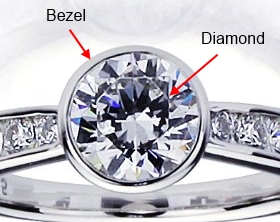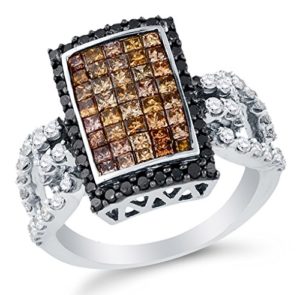Uvakufljeno vozilo za potrebe Medžlisa IZ-e Beograd
TOP 10 MOST EXPENSIVE WATCHES
Luxury watches are some of the most sought-after and admired pieces of technology. Combining the best in craftsmanship, history, and design, watch prices can soar into the millions. From a $55 million colorful diamond wristwatch to a timepiece commissioned for Marie Antoinette in the 1700’s, we have put together a list of record-breaking timepieces. Let’s take a look at the top 10 most expensive watches in the world to date.
WHAT ARE THE MOST EXPENSIVE WATCHES IN THE WORLD?
Graff Diamonds Hallucination – $55 million
Graff Diamonds The Fascination – $40 million
Breguet No. 160 – $30 million
Chopard 201-Carat Watch – $25 million
Patek Philippe Supercomplication – $24 million
Jacob & Co. Billionaire Watch – $18 million
Paul Newman’s Rolex Daytona – $17.8 million
Patek Philippe Ref. 1518 – $11.1 million
Vacheron Constantin 57260 – $8 million
Hublot Big Bang – $5 million
most expensive watches
1. GRAFF DIAMONDS HALLUCINATION – $55 MILLION

Topping the list of the word’s most expensive watches is the Graff Diamonds Hallucination. Unveiled at the Baselword watch and jewelry fair, this unprecedented watch is made up of 110 carats of diamonds. Diamonds of all colors, including Fancy Pink, Fancy Yellow, Fancy Green, and Fancy Blue, and cuts, including emerald, heart, pear, marquise, and round, are combined to create this spectacular timepiece.
2. GRAFF DIAMONDS THE FASCINATION – $40 MILLION

Known for their luxurious diamond jewelry items, Graff Diamonds created The Fascination watch, which contains 152.96 carats of diamond with a center diamond that is a 38.14-carat D Flawless pear shape. The center diamond detaches into a ring that can be worn separately.
3. BREGUET NO. 160 – $30 MILLION

The original version of this watch was allegedly commissioned for Marie Antoinette by one of her lovers. Abraham-Louis Breguet began working on the watch in 1782, and Marie Antoinette was executed before its completion in 1827 by Breguet’s son. The watch included every known complication at the time, including a thermometer, chime, and perpetual calendar. The watch was on display at the L.A. Mayer Museum in Jerusalem until it was stolen in 1983. The watch was eventually recovered and is still on display at the Mayer museum today.
4. CHOPARD 201-CARAT WATCH – $25 MILLION

This stunning watch contains 874 diamonds, totaling 201 carats, in an array of colors. The center of the Chopard watch is comprised of three heart-shaped diamond in yellow, pink, and blue.
5. PATEK PHILIPPE SUPERCOMPLICATION – $24 MILLION

This gold pocket watch was created in 1933 by Patek Philippe for banker Henry Graves Jr. The watch took 5 years to design and build and features 24 complications, including a perpetual calendar, sunrise and sunset times, and a celestial calendar from Graves’ apartment on Fifth Avenue in New York.
6. JACOB & CO. BILLIONAIRE WATCH – $18 MILLION

The Billionaire Watch contains 260 carats of emerald-cut diamonds, 167 individual components, and 19 jewels. The bracelet and watch face are one seamless construction made in 18K white gold.
7. PAUL NEWMAN’S ROLEX DAYTONA – $17.8 MILLION

A gift from his wife, movie star and race car enthusiast Paul Newman’s Rolex Daytona sold for a staggering $17.8 million in 2017. Art deco in style, the 1968 Daytona reference 6239 was engraved with “Drive Carefully, Me” by wife and actress Joanne Woodward. Paul went on to gift the watch to his daughter’s boyfriend at the time, who donated a sizable amount of the sale to the Nell Newman Foundation.
8. PATEK PHILIPPE REF. 1518 – $11.1 MILLION

In late 2016, the stainless steel-cased Patek Philippe ref. 1518 sold at auction for just over $11 million. Patek Philippe produced the 1518 model in 1941, making it the first perpetual calendar chronograph wristwatch every produced in a series.
9. VACHERON CONSTANTIN 57260 – $8 MILLION

Including 57 complications, 2826 individual components, and 242 jewels, Vacheron Constantin’s 57260 watch is a technological and artistic feat. This watch took 8 years to design and create, and is estimated to have been commissioned for $8 million for a private client.
10. HUBLOT BIG BANG – $5 MILLION

Hublot’s Big Bang watch contains 1,282 diamonds in total, including more than 100 carats of baguette diamonds and 6 emerald-cut diamonds weighing more than 3 carats each. Beyoncé purchased this watch for Jay-Z as a birthday present in 2012.
WHAT MAKES WATCHES SO EXPENSIVE?
The primary factors that determine how much a luxury timepiece is worth are:
Technology
Craftsmanship
Materials used
Brand
These factors all work in conjunction to determine the ultimate value of a watch. The precision, craftsmanship, labour and skill that go into luxury watches is what sets them apart from other watches. Rolex watches, for example, are all handle assembled and the brand has their own foundry that makes the gold they use in their watches.
HOW TO SELL OR UPGRADE YOUR WATCH
Fill out our online form– be sure to include photos of your watch
Receive a price quote
Send your watch in (free shipping and insurance is provided) or schedule an appointment
Get a final price in the form of a wire, check or store credit for up to 20% more
If you are interested in selling or trading in your luxury watch for a new one, WP Diamonds offers a convenient and safe online service. With an A+ BBB rating and hundreds of online reviews from our customers, you can be sure that you are selling your luxury watch to a trustworthy watch buyer. There are no fees charged and our team of expert watch buyers can accurately assess the value of your watch and make you a strong offer.
How much is your watch worth? Ultimately, a limited edition timepiece that is highly sought after will always fetch high prices. And a watch that comes with box and papers, has been regularly serviced and is in great condition will also do well. But to find out exactly how much you could sell your watch for, or trade in for a new watch, click the button below to receive your offer. Get a cash price or upgrade your luxury watch today.
11 Different Types Of Engagement Ring Styles
Diamond rings can be classified in many ways, but the classifications used most often are by design, type of setting, shape and cut of the diamonds, and metal used to make the band. Let’s take a look at each of these types of diamond rings.
Diamond Ring Types by Design and Number of Stones
The most often seen diamond ring types are solitaire rings, rings with side stones, and pave diamond rings.
Solitaire rings are made with a single diamond in the setting, usually held by prongs, although other mountings, such as the bezel setting or tension setting, are also used.
Rings with side stones have one center diamond surrounded by smaller diamonds.
One of the most popular variations of side-stone rings is the three-stone ring, which has one center diamond and two stones on each of its sides.
Click here to see a selection of diamond ring settings and their prices.
Pave rings are studded with small diamonds attached to the band with tiny metal prongs that look like droplets of metal. Depending on its design, such a ring can be made only with small pave-set diamonds or it could feature a bigger single stone, or a center diamond with side stones.

Pave-setting diamond ring
Diamond Rings by Type of Setting
There are different types of settings used to hold a diamond in a ring, and here are the most popular ones:
Prong settings hold the diamond with metal projections, usually four or six of them, although settings with more prongs are also made.

Typical prong setting
Bezel settings surround the stone with a band of metal, fully or partially. Settings where only part of the stone’s outer edge is held by a metal band are referred to as partial bezel settings.

Round diamond in a bezel setting
Invisible settings hold diamonds in a metal framework that is underneath the stone and is not visible from the top of the ring.
Channel settings, as the name suggests, hold diamonds in a channel made in the ring’s band.

Typical channel setting containing small diamonds
Tension settings hold the diamond between the two ends of the band by applying pressure, not by using prongs, bezels, or another type of mounting device.

This is how a tension setting holds a diamond by applying pressure to it.
Diamond Rings by Diamond Shape and Cut
Diamond shape refers to the profile of the stone, while the term “diamond cut” is more specific and is used to refer to the number, shape, and alignment of the stone’s facets.
Round diamonds are by far the most popular. The classic round cut was designed to maximize the stone’s brilliance, which surpasses that of stones with other cuts.
Oval cuts are also popular, although not as much as round ones. There are other popular cuts that are derived from the oval cut: the marquise cut (whose two ends are sharp instead of rounded), the pear cut (basically an oval cut with one sharp end), and the heart cut (an oval cut with one sharp end and a cleft on the opposite rounded end).

Marquise-cut diamond

Pear-cut diamond
Rectangular cuts include the popular princess cut, the emerald cut (a rectangular cut with truncated corners) and the Asscher cut (a square emerald cut), the cushion cut (with rounded instead of sharp or cut corners), and the radiant cut.
The classic triangular cut is referred to as trillion cut, or trilliant cut. The sides of this cut’s triangular profile can be straight or slightly rounded.
Types of Diamond Rings by Metal
The most often used metals used to make diamond rings are platinum, white gold, and yellow gold.
Platinum rings are among the most popular to set diamonds in because of the color and durability of the metal.
White gold diamond rings are also very popular, as they are relatively affordable while still being pretty durable.
Yellow gold rings wear out more quickly than white gold or platinum ones, as yellow gold is relatively softer. This material is an especially good choice for diamonds of lower color grades because the yellow tints in such stones are made less visible by the yellow color of the ring.
Types of Diamond Rings by Style
Thick vs. Thin Diamond Bands
If you are selecting a ring, it is important to consider how thick its band is, for a couple of reasons:
First, along with the type of metal used, band thickness is one of the factors affecting how hard it would be to resize the ring. Thicker bands can be hard to work with, especially if they are made of a very hard metal.
Second, how thin a band is determines how quickly it will wear out or how easily it will bend. This is especially true if the band is made of a softer metal such as yellow gold.
Wide vs. Narrow Diamond Rings
Rings with bands that are too wide can make it hard for you to move your finger. Bands that are too narrow, on the other hand, can bend or break easily.
Bigger vs. Smaller Diamonds in Rings
It is important to consider the size of the diamonds in relation to the size of the ring they are attached to.
Bigger diamonds attract more attention, but you should make sure that the ring is big enough for them. Otherwise, the piece may not be well balanced and move easily when you wear it.
Smaller diamonds are cheaper per carat, but you should ensure that they are not too small for their setting. Otherwise, they may be loose and might fall off.
Where to Buy a Diamond Ring?
We recommend James Allen (read review) because you can take a 360-degree look at any stone before having it set in a ring.
Recommendations for education and training: Categories A and C (1995)
THESE RECOMMENDATIONS ARE OUTDATED
Publication
FELASA recommendations on the education and training of persons working with laboratory animals: Categories A and C: Reports of the Federation of European Laboratory Animal Science Associations Working Group on Education accepted by the FELASA Board of Management. M. S. Wilson; E. Berge; J. Maess; G. Mahouy; I. Natoff; T. Nevalainen; l. F. M. van Zutphen; P. Zaninelli. Lab Anim. 1995 Apr;29(2):121-131.
Appropriate education and training of all those engaged in the use of live vertebrate animals for scientific purposes is required by both the Council of Europe (Convention ETS 123, Article 26) and the European Union (Council Directive 86/609/EEC, Article 14).
FELASA has elaborated these requirements in practical detail, for this purpose dividing those involved into 4 Categories (although these Categories need not be mutually exclusive): Category A-persons taking care of animals; Category B-persons carrying out animal experiments; Category C-persons responsible for directing animal experiments; Category D-Iaboratory animal science specialists. FELASA has based its recommendations on functions – which are common to all, rather than on nomenclature – which differs from country to country.
The teaching syllabus published here in detail for Category C provides a common basis for other Categories where functions are similar, while the section ‘Animal care/husbandry’ of Category A Level 1 should satisfy the requirement of Article 14 of the Directive that ‘persons carrying out or supervising the conduct of experiments’ (Categories Band C) ‘shall … be capable of handling and taking care of laboratory animals’.
Practical, theoretical and ethical aspects should be treated for all Categories. Refinement of techniques, reduction in the number of animals used and replacement wherever possible by non-sentient systems should be guiding principles. The FELASA recommendations for Categories A and C are presented here.
(felasa.eu)
TRAVEL – DESTINATION: Europe's most brilliant beach holiday hotels for summer
Italy
With more than 4,700 miles of coastline, Italy is home to some of Europe’s most picturesque seascapes peppered with secluded coves and stylish resorts. The dramatic scenery of Liguria’s Cinque Terre, where traditional villages perch on rugged headlands, attracts scores of tourists in the summer months; the Amalfi Coast is another major draw, with its cornice road that winds along towering cliffs. Italians descend on the beaches in July and August, although it’s possible to seek out tranquillity at one of the exclusive hotels that hug the country’s coastline.
STAY
Hotel Il Pellicano
Porto Ercole, Tuscany, Italy
Hotel Santa Caterina
Amalfi, Amalfi Coast, Italy
Belmond Hotel Splendido
Portofino, Liguria, Italy
Spain
Away from the more familiar ‘costas’, try the beaches along the north coast from the Basque Country to Galicia, or the Costa de la Luz on the Atlantic. Do you enjoy seeking out tiny coves awash with clear, turquoise water discovered on a walk through the pines? Or will miles of white sand, crashing waves and a surf or kiteboard keep you amused? Perhaps it’s a beachfront bar with a steady supply of Mojitos to keep you dancing into the early hours. Then again, you might just want to lie on a lounger while keeping an eye on your kids as they paddle on the shore. Spain really has something for everyone.
STAY
Hotel Tamariu
Tamariu, Costa Brava, Spain
W Barcelona
Barcelona, Catalonia, Spain
Finca Cortesin Hotel Golf & Spa
Malaga, Andalucia, Spain
France
We are reliably schizophrenic about the French. This is understandable. They are both our next-door neighbours, and hereditary foes. Clearly, and like a classy courtesan, France is so damned seductive that she lures us away from fiercely-held principles. You can see how she might. The most diverse country in Europe runs from celebrated mountains to the continent's finest coast via everything else in-between.
STAY
Le Petit Nice – Passedat
Marseille, Côte d'Azur, France
Hotel du Cap-Eden-Roc
Cap d'Antibes, Côte d'Azur, France
Castel Beau Site
Perros-Guirec, Brittany, France
Greece
Other island silhouettes on the horizon, a transparent sea lapping a sand or pebble shore (there’s a special Greek word for the sound – flísvos), a congenial beach bar a few steps away… for many visitors, these are the essentials of a holiday in the Greek islands. Venture further inland, however, and you will find atmospheric villages and monasteries, world-class museums and a laid-back lifestyle pursued mostly in public.
STAY
Lindos Blu Luxury Hotel & Suites
Rhodes, Greece
Mykonos Grand Hotel & Resort
Mykonos, Greece
Delfinia Hotel
Corfu, Greece
Croatia
A country of dramatic mountainous landscapes and dreamy deep-blue seascapes, Croatia is now easier to visit than ever before. Many lovers of the great outdoors come to Croatia specifically for its adventure-sports facilities – between the sea and the mountains, sailing, scuba diving, sea kayaking, rafting, mountain biking and rock climbing are all on offer. While Croatia’s rocky stretch of Adriatic coast is not suitable for large-scale tourist development, it is astoundingly beautiful, offering numerous small pebble coves backed by pinewoods and giving on to a crystal-clear turquoise sea.
STAY
Hotel Kompas Dubrovnik
Dubrovnik, Croatia
Hotel Adriatic
Rovinj, Istria, Croatia
Hotel Mlini
Mlini, Dubrovnik, Croatia
• The best hotels in Dubrovnik
Portugal
Golfers and sunseekers flood to the southerly Algarve seeking hidden coves and limestone rocks resembling abstract sculptures that rise out of the blue ocean all along the coast. Golden sands stretch from the west coast with its wild waves – a paradise for surfers – to the more gentle central and eastern Algarve, where long, accessible beaches alternate with mere handkerchiefs of sand at the end of dizzyingly steep steps carved into the rocks. There is much to discover in Europe’s most westerly country.
STAY
Vila Joya
Albufeira, Algarve, Portugal
Vila Vita Parc
Armação de Pera, Algarve, Portugal
Martinhal Beach Resort & Hotel
Sagres, Algarve, Portugal
Malta
Malta is best known in Britain as a sun and sea destination. There is certainly no shortage of either. Malta gets more than 300 sunny days a year and is surrounded by clear blue waters, some of the cleanest in the Mediterranean, and is much enjoyed by visiting swimmers, snorkelers and divers. Summer is delightful for the almost guaranteed bright blue skies and perfect Mediterranean Sea. This is the ideal time for sunbathing, swimming, diving and boat trips, as well as for local festivals and parish festas.
STAY
Radisson Blu Resort & Spa, Golden Sands
Mellieha, Malta
db Seabank Resort + Spa
Mellieha, Malta
The Westin Dragonara Resort
St Julian's, Malta
Turkey
The stretch of Turquoise Coast running south and west of the gateway city of Antalya, known in ancient times as Lycia, is one of the most refreshingly undeveloped in the Mediterranean. This is due in no small part to the region’s rugged mountains which, bar a couple of narrow plains, a clutch of spectacular bays and a scattering of pretty coves, plunge straight into a startlingly blue sea.
STAY
Mandarin Oriental, Bodrum
Bodrum, Turquoise Coast, Turkey
Olympos Lodge
Antalya, Turquoise Coast, Turkey
D-Maris Bay
Marmaris, Turquoise Coast, Turkey
Contributions from: Annie Bennett, Kiki Deere, Marc Dubin, Jane Foster, Mary Lussiana, Lee Marshall, Anthony Peregrine, Terry Richardson and Juliet Rix.
27 Types Of Watches To Know About (Before You Buy Your Next Watch)
For some people, watches may not be much of a big deal. These people would see watches all the same. They are the kind of people who believe that watches only do just one thing and that is to tell the time. Perhaps you are one of them and you think that all you need in a watch are the numbers – either they go with hands or are displayed in LCD.
If that’s the case, then most probably, you have underestimated how much a watch can help in your everyday life. And that perhaps, you were not able to maximize the amazing features of your watch or appreciate how it really works.
Sorry to burst your bubble, but watches are not as simple as they look. Once you understand the various types of watches available in the market, you will realize that actually, different watches have different things to offer.
As such, you can even find one that can even partner with you – whether in your profession, hobby or simply for everyday life. You can also find a perfect watch to give to the people around you – to your young child, to teenage girls and boys, to your special someone or spouse, to your graduating kids or even to their teachers.
Why Would You Want to Know the Types of Watches?
 Have you realized that it would be kind of awkward to give your spouse and your teenager kid the same watch? More so, a lawyer’s watch is different from that of the police and even more different from those in the medical field. This is why you would want to know the different types of watches.
Have you realized that it would be kind of awkward to give your spouse and your teenager kid the same watch? More so, a lawyer’s watch is different from that of the police and even more different from those in the medical field. This is why you would want to know the different types of watches.
Once you know the types of watches, you will be able to narrow down your options whenever you are buying your watch or when you are choosing for one to give.
You’ve got to admit, the fact that there are so many choices makes it harder especially when you thought that they are all the same.
When you are knowledgeable about the types of watches, you will be able to spare yourself from wasting precious time (that’s the point of having a watch in the first place, right?).
You will be able to know what to look for in a watch, appreciate its features and give the most appropriate watch. Surely, your loved one or friend will appreciate your gift more if it is something that they could and would really wear.
Moreover, you will be able to buy wisely knowing which ones are actually worth its price. Knowing the types of watches will help you understand why Akribo watches are so cheap and why brands like Omega are pretty costly.
You see, unlike other everyday things that are slowly phasing out because of technology, watches are actually getting more diverse. There are more types of watches than you even realize. There are so many kinds of watches that people are actually confused about how to categorize them. That is what this article is all about.
Types Of Watches
Watch Display: Analog, Digital, Hybrid, Tactile, Touchscreen
 One of the easiest ways to categorize watches is based on the display. Essentially, it is what you can see on the watch face.
One of the easiest ways to categorize watches is based on the display. Essentially, it is what you can see on the watch face.
Analog Watches
This one is undeniably the most traditional display type of watches. It’s the one with an hour hand, a minute hand and sometimes the second hand.
It is so common and most likely, it’s the type you grow up within your house, in your school, and in almost every public infrastructure. It is even probably the type your parents used to teach you how to read the time. It is so common you probably don’t need any further explanation.
Digital Watches
Digital is the one that uses LCD screen to display the time and other information that may be available in the watch. It needs electric power so it is only available among quartz watches.
Hybrid Watches
From the term itself, this is the type that combines the first two types. At first glance, it looks like an analog watch, with the hour, minute and second hands. Yet hybrid watches offer much more on their LCD screen. Many wearers prefer to have the classic look of an analog face combined with the modern convenience of apps, notifications and other features that smartwatches offer.
Some display time digitally on the LCD while there are also hybrid watches that include fitness trackers, may even be connected to a smartphone, and other features available in common smartwatches. These are hybrid smartwatches.
Click here to see our list of best hybrid smartwatches.
Tactile Watches
Tactile watches, from the term itself, are those that are built to tell time even without you looking at it.
Although usually thought that they were built primarily for the blind, the first tactile (pocket) watches were created in the early 1800’s so the owner can discreetly know the time even without pulling the watch off his pocket. However, nowadays, since pocket watches are a rare option, tactile watches are generally built for the blind.
There are also various designs for tactile watches. Usually, instead of hands, they have two ball-bearing that rotate around the watch it mark the hour and minute. There are also some which cover you may open so you can feel the hands. For more accurate time reading, there are also Braille watches.
Touchscreen Watches
Since smartwatches often offer more features than they could fit in the screen, they usually go with touchscreen displays to easily navigate around its menu and other functions. As the name indicates, the watch functions are controlled primarily through touching the screen.
The Apple watch is a perfect example, while they still have buttons where the traditional watch crown would be they are mostly controlled by touching different options on the screen.
B. Watch Style: Casual, Dress, Fashion and Luxury

This category pertains to the overall visual appeal of the watch, Does the watch seem for everyday wear or for formal wear? Or maybe it has the overall appeal that outshines the crowd.
Casual Watches
Similar to clothing items, casual watches are the most common watches in terms of style. They are not elegant nor make you stand out in any situation. Rather, casual watches are designed for everyday use and for people that don’t really require much from their watches. As such, they are the most affordable ones and perhaps the best choice as a gift especially if you are not very familiar to the person to whom you want to give a watch.
Dress Watches
Contrary to the first style, this type of watch is best for business and formal wear. The best dress watches are those slim enough to be hidden under the sleeve of a shirt or suit. They are generally simple yet elegant to complement the wearer’s attire. They do not draw too much attention yet it is nice that the wearer’s watch match with his shoes and belt.
To keep dress watches simple, they usually have just the hour and minute hands; although a second hand and a date window are just fine additions. Nonetheless, the dial and bezel must be unornamented, preferably white, black or metallic to maintain the watch’s simplicity. Click here to see our top picks for best dress watches under $500.
Dress watches are a good choice for a CEO, a lawyer or for an investment banker. Yet, because of their simplicity, they are also best for those who prefer a minimalist lifestyle.
Fashion Watches
Not everyone agrees on the exact definition of fashion watches, but we generally refer to fashion watch brands that do not primarily specialize in watchmaking or have any established horological history. Fashion watches are sold by brands that are known for their reputation in the fashion world rather than their expertise in making watches.
Many of these brands license their watches to other companies to manufacture them, leaving the watchmaking up to others. These watches usually focus on the aesthetics, branding and often have a prominent logo. Many fashion brands use inexpensive quartz movements but retail for premium prices due to their brand recognition and high demand.
Emporio Armani, Hugo Boss, Gucci, Michael Kors, and Guess watches are all examples of fashion watches. Click here to see a more complete list of fashion watch brands.
Luxury Watches
We feel that this article wouldn’t be complete without mentioning luxury watches.
There may be some debate about whether “luxury” is a specific style of a watch or if the watch brand’s own reputation defines it as luxury.
However, there is definitely a clear separation between fashion watches and luxury. Luxury watches are generally made by companies that have a long history in watchmaking. While some luxury watches due use gold, diamonds and other precious metals and jewels that add to the value, they also use high-end movements and carefully craft their watches by hand.
Many luxury watch brands are Swiss, the make their watches “in-house” in limited numbers and are sold in exclusive retail settings. They generally hold their value better than other brands and are also coveted by watch collectors, celebrities and the wealthy.
Patek Philippe, Hublot, Vacheron Constantin, Audemars Piguet, Lange & Söhne, Jaeger-LeCoultre, Tag Heuer and Rolex are some of the best-known luxury watch brands.
C. Based on Movement: Quartz, Mechanical Automatic, Solar, Kinetic, Chronometer, Spring Drive

Watch movement is essentially that which gives life to the watch. It pertains to the mechanism that drives the watch to move.
Quartz Watches
Quartz is perhaps the most common type in this category. Quartz is also known as silicon dioxide or sand, which is an abundant mineral on earth.
Quartz watches use quartz crystal oscillation and an integrated circuit to keep time. Quartz watches offer accuracy at an affordable price. More so, they are more durable if compared to automatic watches.
The combination of accuracy, affordability, and durability makes quartz watches a popular choice.
Mechanical Automatic Watches
Originally, watches were designed to run only by using mechanical parts, meaning, without the use of electricity. Instead, they use the potential energy stored in a long spring or mainspring. The mainspring slowly unwinds and transfers the energy and needs to be wound occasionally.
An automatic watch (also known as self–winding watch) is a mechanical watch that has a rotor attached to the movement. When you move your wrist with an automatic watch, the rotor spins- winding the watch back up again by tightening the mainspring. When you are not wearing them on your wrist, you can also keep automatic watches it in a watch winder that moves gently back and forth and keeps it wound.
This mechanism also makes mechanical automatic watches easily identifiable. Because of the mechanical parts of automatic watches, their second hands tend to sweep giving a relaxed action that’s just nice to look at.
However, because they are being run by mechanical parts, automatic watches are not as accurate as quartz watches. They are also generally quite a bit more expensive than quartz.
Kinetic Watches
A kinetic watch is a combination of quartz and automatic mechanical watches.
Similar to automatic watches, it has a weighted rotor that causes the watch to move. However, in a kinetic watch, the rotor movement is converted to electricity by virtue of an internal dynamo. This electricity is then being stored in a power cell. To recharge, kinetic watches need to be worn. Kinetic watches are often confused with solar-powered watches, see an explanation here.
Chronometer Watches
Since automatic watches are nice to have yet are not as accurate as quartz, chronometers fill in the gap. Chronometers are made of high-quality materials that do not expand or contract easily with the change of temperature. Its movement is also more advanced than the rest to make it more accurate.
“Chronograph” also refers to the stopwatch feature on watches. See Chronograph in the “functionality” section below.
Technically, the name chronometer can only be obtained by those who were tested and passed the 16-day test of Controle Officiel Suisse des Chronometers (COSC), a testing institute in Switzerland.
However, since this test is quite costly, there are also other chronometers that have certified accuracy since their makers also have their own standard testings.
Spring Drive Watches
The watch with spring drive movement was created in1977 by Yoshikazu Akahane at Suwa Seikosha which later merged with Seiko.
The movement was first commercially released by Seiko and is now used in their Credor, Grand Seiko, and Prospex watch lines.
Similar to kinetic watches, spring drive is also a combination of automatic self-winding mechanism and quartz accuracy. Yet, spring drive offers more than kinetic and is one of the most technologically advanced movements right now.
Spring drive also has a mainspring that stores potential energy, and the same rotor to wind the mainspring. With regard to timekeeping, spring drive uses a Tri-synchro regulator to keep time. It also has an integrated circuit coupled with a quartz crystal to ensure the accuracy of the watch.
Interestingly, the second hand of spring drive watches also move in a sweeping motion compared to watches that have a noticeable ticking motion every second.
For more, read this article about why Rolex watches don’t tick.
D. Based on Power Source: Solar, Quartz, Smartwatch
 From the term itself, this categorizes watches based on the source of energy that powers the watches.
From the term itself, this categorizes watches based on the source of energy that powers the watches.
Solar Powered Watches
Solar watches capture solar energy through the photovoltaic cells on the watch’s face and convert them to electricity This electricity is then stored inside a power cell. After which, the solar watches basically function like quartz watches.
Citizen and Seiko compete directly with their Eco-Drive and Seiko Solar lines and are both known for making some of the best solar-powered watches on the market along with other brands that make solar timepieces including Casio and others.
Nonetheless, solar watches do not only use sunlight but all other lights that are bright enough. So ideally, it is a watch that can run forever. To make this even better, its power reserve can last up to 6 months. To recharge it, you just need to leave it under a bright light.
Quartz Watches
Primarily, quartz watches are powered by a battery that causes the quartz crystal inside to vibrate at a certain rate. Although quartz produces more accurate watches, the downside is you have to keep replacing the battery in order to maintain accuracy. Otherwise, the watch is essentially useless.
Know more about quartz watches in this article.
Lithium-ion Watches
Smartwatches, on the other hand, are usually powered by a rechargeable lithium-ion battery.
It is primarily important that they are rechargeable since smartwatches generally include other features that make them “smart”, such as fitness tracker, camera, GPS, etc. These features are usually “power-hungry”, therefore the need for a rechargeable battery.
E. Functionality: Chronograph, GMT, Calendar and Moonphase, Day and Night, Dive, Pilot, Field, Smartwatch

Nowadays, watches do more than just tell the time. They are now so diverse that they deserve to be categorized based on what can they offer other than just the time.
Chronograph Watches
A chronograph is sometimes referred to as an additional feature of a watch. However, since a chronograph adds functionality, it deserves to be referred to as a type of its own.
Chronograph functions as a stopwatch. It’s the 2 or 3 smaller circles with their own hands that you would find in a watch face. To use it, there are often two buttons on the side of the watch, surrounding the crown – one for start/stop while the other is for reset.
More details on chronograph watches here.
GMT Watches
GMT stands for Greenwich Mean Time. The key feature that differentiates a GMT watch is its extra hand. In addition to the hour, minute and second hands, the GMT watch has a fourth hand that rotates separately from the other 3 hands. The fourth hand rotates around the face once every 24 hours.
Additionally, GMT watches have a rotating bezel that may be used to set to different time zones.
Calendar and Moonphase Watches
Similar to a chronograph, the moon phase is also a feature on watches and those that have this are called moon phase watches. Moonphase indicates the phase of the moon based on the calendar of the watch. It also indicates if it’s a day or a night by showing a picture of a sun or moon. Click here to see some of our favorite ladies’ moon phase watches.
Day & Night Watches
Day and night watches are practically similar to moon phase watches but quite limited. They only display whether it’s night or daytime.
Dive Watches
Dive watches are designed to withstand water so they have features to do just that.
Their crowns are often screw-down, meaning they need to be screwed (using your fingers) to lock/unlock, and they have thicker rubber gasket for better protection against water. Dive watches typically also have a rotating bezel that also serves as a timer to help drivers control how long they’ve been under the surface.
Check out some of the best affordable dive watches here.
Pilot Watches
Pilot watches, on the other hand, are designed for aviation. They were initially developed for fighter pilots. As such, they are designed to be easily read and have specific features that are useful for pilots. Most pilot watches include special tools such as tachymeters, altimeters, compasses and often have a slide rule bezel to help make calculations on the fly. They often come in large sizes and with the numbers visible on the watch face.
If you’re interested in checking out this kind of watch we’ve come up with a list of our favorite pilot watches under $500 here.
Field Watches
Field watches, moreover, are built to be functional for the military. They must have a rugged ability to withstand water, dirt, sand or even mud while maintaining accurate time. They should be tough enough in order to survive any mission their owner might face. Their key description: durable. Read more about field watches here.
Click here to see our top picks for the best field watch by budget.
Since they are durable, they are perfect too for the police, firefighters and even mud run racers.
Tool Watches
The last three watch types (Dive, Pilot and Field) are sometimes grouped together in a wider group called tool watches that all have special functions beyond telling time. While there doesn’t seem to be a specific agreement on what defines a tool watch, they all have special features or “tools” that go beyond a standard watch.
This might be the inclusion of a slide rule on a pilot watch, tide readings on a sailing watch for helping with sea navigation or a compass or altimeter (see ABC watches) on watches designed for hiking or mountaineering.
Smartwatches
Smartwatches are a type of watch that usually allows connection to your phone and other gadgets such as Bluetooth earphones. The features a touch screen and provides many of the functionality of a smartphone on your wrist without having to constantly be reaching for your phone. Most smartwatches sync notifications, calendars, email and other mobile apps.
As mentioned in the previous section, these smartwatches are “smart” because they offer a variety of features. However, not all smartwatches are the same. Some are water-resistant, some have shutter function for your camera, some can even measure your heart rate and track your sleep. Some offer all these and more while some do not.
For a quick run-through, here are the types that we have covered in this article.
Watch Type Comparison Table
| Category | Watch Display | Watch Style | Watch Movement | Watch Power Source | Watch Functionality |
| Description | What you can see on the watch face | Pertains on the overall visual appeal of the watch | What drives the watch to move | What powers the watches | Pertains to what the watch can do aside from telling time |
| Types | AnalogDigital
Hybrid Tactile Touchscreen |
CasualDress
Fashion Luxury |
QuartzMechanical Automatic
Solar Kinetic Chronometer Spring Drive |
SolarQuartz
Smartwatch |
ChronographGMT
Calendar and Moonphase Day and Night Dive Pilot Field Tool Smartwatch |
Hopefully, the table help clarifies rather than complicate the issue further. In the end, it appears there really is no definite consensus among watch experts even.
The Debate On Different Types Of Watches
Nonetheless, in order to make you fully informed on this topic, we have also listed here some other common opinions on how to categorize watches.
Two General Types: Quartz Watches and Mechanical Watches
This view generally sorted out the watches based on their maintenance needs. Quartz watches are those that do not require much maintenance while mechanical watches are those that would normally need maintenance every year.
Quartz watches include the battery-powered, kinetic powered and solar-powered watches, Mechanical watches, on the other hand, are those manual winding and automatic winding watches.
Four Categories: By Movement, By Style, By Display, and By Class
This view is almost similar to what we presented here. However, they failed to cover some types that we have described in this article which causes a significant gap in the type of watches. Particularly, this categorization fails to include smartwatches in any of the said categories.
Seven Types of Watches
 One particular view believes that there are only 7 types of watches that people need to know.
One particular view believes that there are only 7 types of watches that people need to know.
- Automatic watches
- Quartz watches
- Solar-Powered watches
- Dress watches
- Chronograph watches
- Dive watches
- Smartwatches
This option may be quite simpler compared to what was presented in this article. However, there are a lot of loopholes in it and you can’t clearly see what differentiates one type from the other. Under this view, there might also a watch that may cover not just one type.
One familiar example is that an automatic watch may also be a dress watch.
There are other views on the different types of watches but those are pretty much negligible at this point. This article has provided a comprehensive list anyway.
Perhaps by now, you have realized that watches are not as simple as you initially thought. Watches can actually offer you much more than just time and that you can actually find watches that can suit your needs, on the field, in the air or even underwater.
After all, that’s been presented here, this article intends to help you and not to confuse or overwhelm you even more.
(watchranker.com)
DOCTORAL RESEARCHERS EXPLORE INTERNATIONAL PERSPECTIVES IN EDUCATION POLICY AT SECOND WINTER SCHOOL
Doctoral researchers, Nuzha Nuseibeh and Alice Tawell, attend the 2018 International Perspectives in Education Policy (IPEP) Winter School at the University of Verona.
Now in its second year, the IPEP is an international winter school designed for doctoral students, postdoctoral fellows, researchers in all areas of education, as well as advanced masters students. Nuzha and Alice were selected for this intensive course, which brought together 25 participants worldwide on 10 – 17 November 2018. The central focus of the course was higher and adult education policy on a global level.
Both students are in their second year of doctoral study at the department. Nuzah’s doctoral study, ‘Getting Your Money’s Worth: How Fees and Debt Affect Employability and Learning’, looks at undergraduates in universities in both Scotland and England to explore the extent to which the different funding systems influence learning, employability attitudes and identity, and how these issues are affected by SES and the type of university.
Alice is investigating, ‘Enacting national school exclusion policy at the local level in England: An embedded single-case study’, which aims to understand how national school exclusion policy is recontextualised and enacted at the local level in and across different settings (Local Authority and schools) in England.
Whilst on the course, both students took part in a mini ethnographic study, which involved interviews (many of which were conducted in Italian) with staff members from the University of Verona, observations, analyses, and then presented their findings to the wider group. The school also presented an opportunity to network on an international scale and establish potential partners and collaborations for future projects.
To find out more about our DPhil in Education see: www.education.ox.ac.uk/programmes/dphil/
What is Managed Dedicated Hosting server?
Those in the digital space are familiar with Managed Hosting in one way or another.
This is a business model where a service provider leases hardware to a single customer. The service provider also provides management of the servers, software, and networks necessary for hosting for the customer.
If an issue arises, a managed hosting provider is there to help pinpoint the problem and rectify it.
What is Fully Managed Dedicated Server Hosting?
Fully Managed Dedicated Server Hosting is an isolated hosting environment where the provider handles the setup, administration, management, and support of the server or platform application. The resources are specific to the user ensuring that your data alone is hosted in your environment without being affected by the issues that arise from sharing resources.
Shared Hosting
Shared hosting is the most popular example of multi-tenancy. This is where many sites or applications exist on the same server. Quite often, shared hosting divides the server resources among customers. This would include storage and bandwidth and in some cases RAM and CPU cores.
Think of shared hosting as a home with renters all sharing the same living space.
Managed Dedicated Server Hosting
Dedicated hosting would be an example of single-tenancy. With this type of environment, a single customer hosts their site(s) or application(s). With managed dedicated server environments, the server hardware and resources for that hardware belong to that single customer.
To continue with the above analogy, think of dedicated hosting as a home with one occupant. This avoids “noisy neighbors” encroaching on your space, disrupting your space and the space of those visiting your site.
What Does It All Mean?
I’m sure you were asking that question. To put it simply, “managed” means that your service provider will manage your environment for you so you don’t have to. Moreover, you don’t have to pay someone to do it for you.
Don’t get me wrong, there are those that prefer to manage their environment in-house. We will explore that idea in a moment. But for those that are starting out fresh, managed hosting makes more sense. Most likely, you may not have the overhead for a Systems Administrator yet.
Why Would Someone Pay for Managed Hosting When They Could Manage In-House?
This is a question that every business owner has to face, and it’s a tough one. There is much talk in the industry from agencies and business owners, especially around the cloud, security, internet of things, privacy, and cyber attacks.
What Benefit Does Managed Hosting Offer Over In-House Management?
The answer to this question will differ between companies. It will depend on the project that you are working on. Effective planning can be the difference between success and failure for your business. I learned from past experience that a Business Continuity Plan is a time and money saver. According to cio.com, a Business Continuity Plan outlines procedures and instructions an organization must follow in the face of disaster, whether fire, flood or cyber attack.
No matter the size of the company, when it comes to managing your infrastructure, you value time and money.
There are three large categories of costs that you must consider.
Infrastructure Costs
The first set of costs that you will need to consider will be the starting infrastructure costs. You will need to determine the correct server hardware for the project.

Here is a list of questions to consider:
- What size server(s) do you need?
- How many servers does the project call for?
- What is the processor that would best work for your environment?
- What resources are necessary to function while at the same time allowing for growth?
- What software will you need?
- Are there be any licensing costs associated with acquiring the software?
These and many more questions will need answers before making any of your purchases. To answer them and also get the right equipment you may need to hire a Systems Administrator. They or your developer will need to determine what resources will run your project. This may not be known at the onset, but effective planning and monitoring of your environment will help.
If the person building your site or application is unsure you can seek professional help from an IT firm. It also helps to know the software you plan to use and what typical server requirements accompany it. You can always start small and upgrade infrastructure along the way.
This leads us to consider the second group of costs, your operating costs.




































